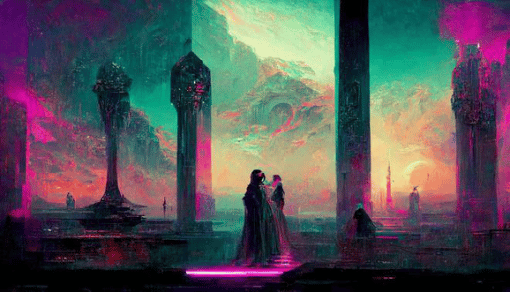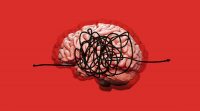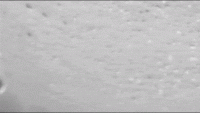Recently, a #call AI to help me draw# sparked discussion. Participants only need to describe the picture they want to see, and the AI can automatically generate the picture. However, with the fermentation of this activity, topics such as “Will AI painting make painters unemployed?” “Is game art being ‘killed’ by AI?” and other topics have surfaced on the Internet.
Questions about whether there is infringement in AI painting have also become the focus of online content copyright disputes. People can’t help thinking: Is AI painting, art creation or art stealing?
How does AI painting do it?
“Sunflowers under the rising sun”, “E-Donkey in the shape of a king crab running on a country road”, “Evil dreadlocks boy in blue flames”, these are both realistic and surreal descriptions, which are the most realistic and surreal descriptions of Weibo users “calling AI help” I” description. And some of these users have also received AI paintings provided by the event organizers.
The actual measurement of “Cai Lai” found that behind the AI painting Weibo pop-up event “Call AI to Help Me”, his initiator was an AI painting agency called 6pen, which was based on Disco-diffusion released by Google open source. AI painting tools have built their own computing power environment and artist community. Users only need to register on its official website and initiate an instruction to create a painting. By entering a simple text description, in just a few minutes, a painting that is close to the text description can be drawn with the help of AI.
In “Cai Lai”, I wrote descriptive words such as “tiger, red, in the twilight of the morning”, and set the painting style to CG rendering, and limited the size of the painting board. Two minutes later, I got a picture created by AI. painted paintings.
The original image of AI painting The original image of AI painting
In terms of painting ability, except for the redundant upper half of the composition, the overall painting ability has surpassed that of most people who have not received professional art training.
framing redundant parts framing redundant parts
In fact, after AI has successively overcome problems such as chess, speech recognition, and text translation, AI-generated paintings are nothing new. “The ability of AI to paint has begun to appear many years ago, and many technology companies at home and abroad have deployed in this regard.” Zhang Peng, a senior practitioner in the AI industry, told Caila.
According to Zhang Peng, as early as a few years ago, painters used Paintschainer to color the line art drawn by themselves through the computer, and the effect achieved could already catch up with some relatively simple artificial coloring works. In addition, through the artificial intelligence image generation scheme of GauGAN provided by NVIDIA, the painter only needs to simply smear a few strokes, and roughly outline with different color blocks and lines, and GauGAN can guess the painter’s intention and actively draw it. An extremely realistic photo.
It is understood that GauGAN 2 uses 10 million images for training. Artists can use it to generate not only realistic landscapes, but also imaginative artistic scenes, which has surpassed many people’s previous impressions of computer illustration art.
This year, with the release of Google Disco Diffusion and its opening to developers, Disco Diffusion with the ability to draw has aroused the attention and discussion of AI drawing from the outside world. In fact, Disco Diffusion’s requirements for prompt words are very loose, and they can be handled with simple words or even machine-translated words, and the pictures involved already have a strong sense of art.
In China, the top technology Internet companies represented by Baidu have also developed their own AI mapping tool – Wenxin Yige. According to Robin Li, founder and CEO of Baidu, this capability is currently called AIGC by Baidu. At present, some pictures in Baidu App are being automatically generated based on the AIGC capability.
To make art or to steal art?
In March 2016, with AlphaGo defeating the Go world champion Lee Sedol in the Go competition, AI has also ushered in a period of rapid development of its industrialization while winning the attention of the outside world. In fact, behind the rapid development of AI, there is an inseparable relationship with the development of three types of technologies: graphics processing unit (GPU), deep learning and big data.
Take AI drawing as an example. In fact, the most fundamental basic technology of AI drawing is the same as AlphaGo, which is good at Go. They are all works that allow the system to deeply learn human beings. After absorbing a lot of data and knowledge, they finally achieve the goal of understanding human behavior. even emotional imitation. In the process of learning, how does AI ensure that the content it learns is reasonable, legal, and non-infringing, which has become the key to how AI creation can ensure the legality of its copyright.
Due to the abuse and unreasonable use of AI painting, the current capabilities of AI painting have attracted objections and protests from some groups of artists around the world.
Polish conceptual artist Greg Rutkowski was concerned about the ability of AI to paint. Known for his magnificent oil painting style, he has recently become the most popular imitation object in AI painting. When he searched for his name on the Internet, all the AI paintings popped up, but his own works were submerged. In a recent interview, Rutkowski lamented, “I feel like my career is under threat.”
After all, the computing power of AI is too powerful. Compared with AI that can spit out a painting that resembles Van Gogh’s expressionist style in three seconds, the creative efficiency that most artists take hours or even days to complete is indeed Incomparable.
In Japan, when the AI drawing software “mimic” was launched, it also attracted a group of cartoonists, asking developers to prohibit AI from imitating themselves. More and more foreign artists are also forming alliances, hoping to promote new policies and regulations.
Li Zonghui, deputy dean and associate researcher of the Institute of Network and Artificial Intelligence Law of Nanjing University of Aeronautics and Astronautics, once attributed the possible infringement risks involved in the AI painting process to two parts: “One is the massive data set for artificial intelligence to perform deep learning, which may include There are other people’s copyright works, and the use of artificial intelligence to related works constitutes copyright infringement; the second is that artificial intelligence uses other people’s copyright works in the process of a specific painting, and its use constitutes copyright infringement.” And Through the analysis of the material library of AI painting and the painting, it can be judged whether the work is infringing.
In his view, if AI mechanically copies, stitches and combines other people’s art, photography or graphic works through picture filters during the painting process, it will obviously constitute infringement. For works that are not mechanically reproduced, it is necessary to further carry out the judgment of “substantial similarity”, decompose the paintings drawn by AI and the works to be compared, observe the similarities and differences between the two, and determine whether they constitute a Substantial infringement.
In fact, the developers of drawing AI tools are generally the biggest beneficiaries of AI drawing and displaying their paintings to the outside world. For developers, while exploring AI creation, developers of AI painting tools should ensure the legality of the copyright source of painting materials, conduct necessary substantive similarity identification of imitative paintings before public publication, and update development in a timely manner It is an intelligent system upgrade to make up for algorithmic loopholes.
“Based on the principle of consistency between benefits and risks, the developers of artificial intelligence for painting should be primarily responsible for the copyright infringement of artificial intelligence.” Li Zonghui said.
Every technological advancement will be accompanied by new technological ethics and social issues. Whether it is playing Go or painting, AI should still take into account its due social responsibilities and technological ethics in the process of pursuing its industrialization.




GIPHY App Key not set. Please check settings